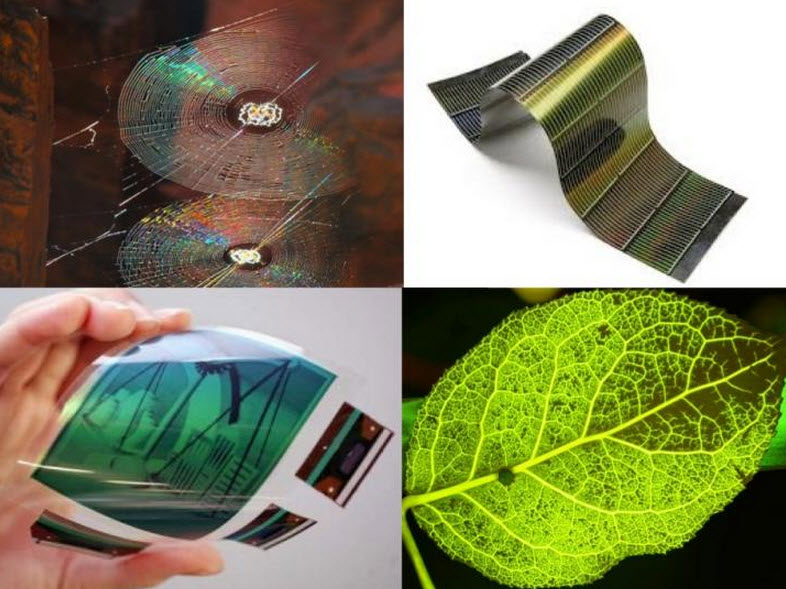Spider webs, leaves inspire touch-screen, solar-cell designs
December 18, 2014

Refined by natural selection, spider webs and leaves serve as models for new and highly effective optoelectronic networks and displays (credit: Boston College)
Natural scaffoldings perfected by evolution such as spider webs and leaf veins can lead to near-optimal performance when copied to create flexible and durable networks for optoelectronic applications such as photovoltaic devices and display screens, researchers at Boston College, South China Normal, and University of Houston reported in the journal Nature Communications.
A network design inspired by the quasi-fractal vein-laced structure of a leaf served as an effective electrode for solar cells, light sources, and transparent heaters, among other applications, the team reported.
“This natural structure has been optimized through the evolutionary process for efficient nutrient delivery with maximal strength and light harvesting,” said co-author Boston College Professor of Physics Krzysztof Kempa. “In our application, these properties translate into highly efficient current transport, desirable mechanical properties, and minimal light shading.”
A second network, drawing on the same designs that make spider webs effective traps for insects and bugs, serves as an efficient way to draw light through an optoelectronic device. The network could find potential application in next-generation touch screens and display panels because of its extreme flexibility, significant mechanical strength, “stealth” transparency and high degree of uniformity, the researchers said.
One of the primary advantages of these two proposed methods is the low cost and simplicity of the manufacturing process.
The researchers said they were surprised by the superior performance of the networks in experimental scenarios. Both delivered a four-fold increase in electro-optical properties, or the benchmark figure of merit. Furthermore, the spider web design network can be stretched by up to 25 percent without any loss of performance and sees only a minimal decline when stretched up to 100 percent of its original size, the team reported.
“No other electrode network can be stretched more than 10 percent,” said Kempa.
The researchers say the specific network patterns they have proposed could improve the efficiency of solar cells and the performance of a new generation of flexible, durable touch screens and displays.
Abstract of Nature Communications paper
Modern optoelectronics needs development of new materials characterized not only by high optical transparency and electrical conductivity, but also by mechanical strength, and flexibility. Recent advances employ grids of metallic micro- and nanowires, but the overall performance of the resulting material composites remains unsatisfactory. In this work, we propose a new strategy: application of natural scaffoldings perfected by evolution. In this context, we study two bio-inspired networks for two specific optoelectronic applications. The first network, intended for solar cells, light sources and similar devices, has a quasi-fractal structure and is derived directly from a chemically extracted leaf venation system. The second network is intended for touch screens and flexible displays, and is obtained by metalizing a spider’s silk web. We demonstrate that each of these networks attain an exceptional optoelectonic and mechanical performance for its intended purpose, providing a promising direction in the development of more efficient optoelectronic devices.